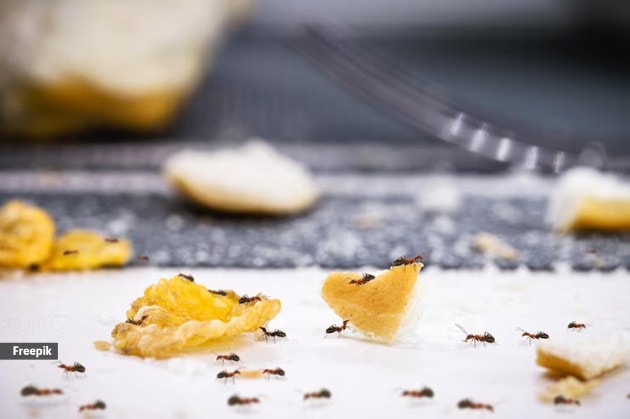Ants in your sugar jar? Here’s what they’re telling you about your kitchen hygiene
Their presence in your sugar jar could be a symptom of broader issues that go unnoticed.
July 15, 2025 14:28 IST 1 / 6
1 / 6You reach for your morning tea or coffee, only to discover a trail of ants marching confidently through your sugar jar – a sight as irritating as it is telling.
While you may blame the sweet temptation of sugar, these tiny intruders are actually signalling something more serious: a lapse in your kitchen hygiene. Ants don’t just appear out of nowhere; they follow scent trails to food sources, and a disorganised, unclean kitchen is the perfect buffet.
Their presence in your sugar jar could be a symptom of broader issues that go unnoticed. And once ants find a reliable food source, they’re hard to stop. We explore what the infestation really reveals about your kitchen’s cleanliness, and how you can fix any issues that you may notice: 2 / 6
2 / 6Improper storage and poor sealing habits
One of the most common reasons ants end up in your kitchen is improper storage. Sugar, flour, grains and snacks left in loosely closed packets or flimsy containers are an open invitation for ants. These insects have an exceptional sense of smell and can detect even the tiniest traces of sugar or crumbs, leading them straight to your stash. Using airtight containers is a frontline defense against pests. (Source: Freepik) 3 / 6
3 / 6Neglected spills and crumbs
What might seem like a harmless spill or a few leftover crumbs on the counter or on the floor can quickly become a feast for an ant colony. Often ignored in the rush of daily life, these are exactly what ants are looking for, easy-to-access food sources that require minimal effort on their part. Ants leave behind scent trails for others to follow, so once one discovers a spill, many more are bound to come. Regularly wiping down countertops, cleaning under appliances, and sweeping the kitchen floor can make a big difference. (Source: Freepik) 4 / 6
4 / 6Overflowing trash bins
Do you leave your trash out in the open overnight or even for days on end? Trash bins that are overflowing or left uncovered can attract ants into your kitchen. Food scraps, fruit peels and sweet residues in the bin offer an irresistible buffet. Ants are incredibly resourceful and will squeeze through the smallest gaps to access waste. To avoid this, ensure your garbage is disposed of regularly, bins are tightly sealed and the area around them is kept clean and dry. (Source: Freepik) 5 / 6
5 / 6Damp corners and leaky sinks
Ants aren’t just hunting for food, they also need water to survive. Leaky faucets, wet dishcloths, recently rinsed utensils or damp corners around and under the sink can offer them both hydration and a cosy place to nest. Moisture-rich environments are especially attractive to certain ant species. Fixing leaks promptly and keeping surfaces dry are important steps in making your kitchen inhospitable to not just ants, but all pests. Ensure that you are also not leaving dishes filled with food and water overnight, wash them properly, ensure that they are dry and store them away. (Source: Freepik) 6 / 6
6 / 6Unclean pantry shelves
Pantry shelves often go months without a proper wipe-down, collecting spills, crumbs and sticky residues that attract ants. Small, unnoticed messes behind jars and packets become long-term food sources. Doing a regular check and deep clean of your pantry, especially corners and behind containers, can eliminate the hidden attractants ants love. If needed, don’t hesitate to call a professional for thorough pest control, especially during the summer and monsoon seasons, when ant activity tends to spike. (Source: Freepik)











